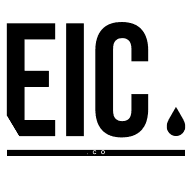What Metrics Measure the Success of Editorial Decisions?
In the meticulous world of editing, measuring the impact of editorial choices is crucial, so we've gathered insights from Editors and CEOs to shed light on their most valuable metrics. From gauging response and engagement to considering completion rates as a sign of success, here are eleven expert perspectives on prioritizing and assessing the outcomes of editorial decisions.
- Gauge Response and Engagement
- Prioritize Engagement Time
- Value Reader Interaction
- Track Reader Engagement Metrics
- Focus on Time Spent on Page
- Creativity Enhances Engagement
- Optimize with Reader Behavior KPIs
- Prioritize Reader Engagement
- Monitor Read Time and Bounce Rate
- Quality Reads as Key Metric
- Completion Rate Indicates Success
Gauge Response and Engagement
The primary measure of success for any edit or editorial is the response and engagement it generates. When a premise is executed with the right tone and value, it will elicit a noticeable and meaningful response. Therefore, the key focus should be on effectively positioning the premise and conveying the main points clearly.
Prioritize Engagement Time
There are many things you can measure and track when it comes to online publishing, but not everything will actually improve your content, and it's easy to fall into the trap of looking at too many indicators.
I personally like to prioritize engagement time, a.k.a. measure the average time users spend on an article. Longer engagement times suggest that the content is resonating with and holding readers' attention. I also try to factor in comments and interactions by analyzing the volume and quality of comments. Active discussions can signal high reader engagement and interest.

Value Reader Interaction
As an editing professional, I measure the success of my editorial decisions primarily through reader engagement and feedback. One key metric I prioritize is the level of interaction and discussion generated by the content I've edited.
When an article or piece I've worked on sparks meaningful conversations, receives thoughtful comments, and is shared widely by readers, it indicates that the editorial choices resonate with the audience. This engagement shows the content connected with readers on a deeper level, prompting them to actively participate and share their own perspectives. Seeing this type of response is a strong signal that my editorial decisions effectively shaped the piece to be impactful and thought-provoking.
While quantitative metrics like views and shares play a role, I believe the quality of reader engagement is the most valuable measure of editorial success. Knowing that the content I've helped refine and polish has encouraged readers to think critically, explore new ideas, and contribute to the discourse is incredibly rewarding and affirming. It demonstrates that my editorial instincts and judgment have served the piece and its audience well.

Track Reader Engagement Metrics
Measuring the success of editorial decisions involves looking at both numbers and reader reactions. A key metric we focus on is reader engagement, which includes tracking things like time spent on page, bounce rate, and social shares.
For example, we published an article about mental health awareness on our website. We used tools like Google Analytics to see how long readers stayed on the page and noticed they spent an average of 5 minutes, which is higher than our usual 3 minutes. This showed us that our choices in structure, tone, and content were engaging. The bounce rate was also low, meaning readers were interested enough to explore more articles on our site.
We also pay attention to reader feedback and comments. For instance, the mental health article received over 50 comments and many shares on social media, indicating that the content resonated with our audience. This qualitative feedback helps us understand what our readers like and expect from us.
Focusing on reader engagement helps us maintain high-quality standards while making sure our content captivates and retains our audience. This approach allows us to continually refine our content strategy to serve our readers better and meet our editorial goals.
Focus on Time Spent on Page
At Innovate, we measure the success of our editorial decisions through several key performance indicators (KPIs), with audience engagement being a top priority. Metrics such as time spent on a page, bounce rate, and social media shares provide insights into how well our content resonates with readers.
For instance, one metric we prioritize is time spent on the page. If users spend more time reading our articles or blog posts, it indicates that the content is engaging and valuable to them. This metric helps us understand whether our editorial choices are effectively capturing and retaining our audience's attention, guiding us to make informed adjustments to our content strategy.

Creativity Enhances Engagement
Engagement is the most crucial metric. Period. Good writers create engaging content—even if that means being creative and bending the rules a touch.
I like to view editing from the lens of creativity instead of the shackles of a textbook.
That said, I feel that writing is an art form that editing is intended to preserve. Naturally, if the writing is also increasing engagement, then preserve the voice and put the wand down!
Optimize with Reader Behavior KPIs
I prioritize reader behavior KPIs. Using tools like Hotjar, which provides "heatmap" solutions, I can see how readers interact with various parts of our site. This insight helps me understand how to rearrange components of the site to optimize performance.
For instance, if a trending article is at the bottom of the homepage and I notice many readers scrolling down to click on it, I might decide to move it nearer to the top to reduce reader friction. Or, if my goal is to increase email subscriptions and I see that most people are clicking on social media icons next to the subscription button, I might run an A/B test where I move the icons away, letting the subscription button stand alone to see if that increases sign-ups.
A few post-publication editorial KPIs I track include: Click KPIs, to see what readers are clicking on before they scroll; Subscription KPIs, to understand what content is driving the most subscriptions; Social KPIs, to identify which social channels drive the most traffic; and Organic KPIs, to determine what content performs best organically. These reader-based KPIs allow me to go beyond just shaping incoming pieces of writing and help me refine our overall editorial strategy.

Prioritize Reader Engagement
Editors are like sculptors. They refine raw materials into polished masterpieces. I follow mainly three metrics: my editorial decisions resonate with the audience, reader engagement, and achieving the intended goals. We prioritize reader engagement. This metric tells us if our edits captivate the audience.
Keeping the audience glued to the content is crucial for effective engagement. Although reader engagement is a crucial metric we follow, it can be optimized using other metrics. So, yes, you need to consider other metrics to measure user engagement with your edits. We look at click-through rates, time spent on a page, and social shares.
CTR indicates that our headlines and introductions are enticing. High CTR suggests that our editorial decisions are doing great. Our editing process is right as it is engaging readers effectively. So, prioritizing reader engagement as a key metric helps us to ensure the quality of our content and deliver value to readers.

Monitor Read Time and Bounce Rate
For me, those success metrics come in the form of tracking how long, on average, my readers are spending on my page and my bounce rate. In one case, when making a new content strategy around more engaging headlines and visuals (not groundbreaking, but the point about methodological steps), we saw a huge lift in article read time. This increase was encouraging as it meant the changes did keep and grab viewers' attention. By focusing on these metrics, I can also constantly improve our editorial strategy to better suit reader needs and improve the overall impact of the content we produce.

Quality Reads as Key Metric
Editing professionals need to measure the success of their editorial decisions based on many factors. They use goal-setting, data analysis, learning from outcomes, metric selection, and dissemination. But the most important statistic of all is the quality of interaction, to which most editing professionals give priority.
Thus, “quality reads” is one of the most important metrics, which calculates the page views and gets you the count of how many times the reader has read half of the content by staying on the page. This statistical data helps understand reader involvement in content rather than page visits and helps evaluate the quality and influence of the content.
Some of the other factors considered to make better decisions for future content the editors examine using analytics like reach, scroll depth, engaged reading time, and other such factors. These analytics help them decide what kind of writing and subject matters are liked by the readers.

Completion Rate Indicates Success
Success in editorial decisions is best measured by audience engagement. The primary metric I prioritize is the completion rate, which shows how many viewers watch a film from start to finish. High completion rates indicate that our captions are enhancing the viewing experience, making the content accessible and engaging for all audiences. This metric directly reflects the impact of our work in accessibility services.




